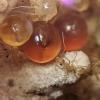Does C. fragilis normally have a very fast growth rate based on your experience?
I received my colony on 5/23 with 5 workers, 1 pupae, a few small larvae, no eggs.
Today 7/23, just shy of 2 months, the colony has 30+ workers with 1 huge major (almost the size of a queen), 20+ pupae, 10+ larvae, 10+ eggs.
Just wondering if this is their normal growth rate or did I do something extra to promote growth?
Thanks.














